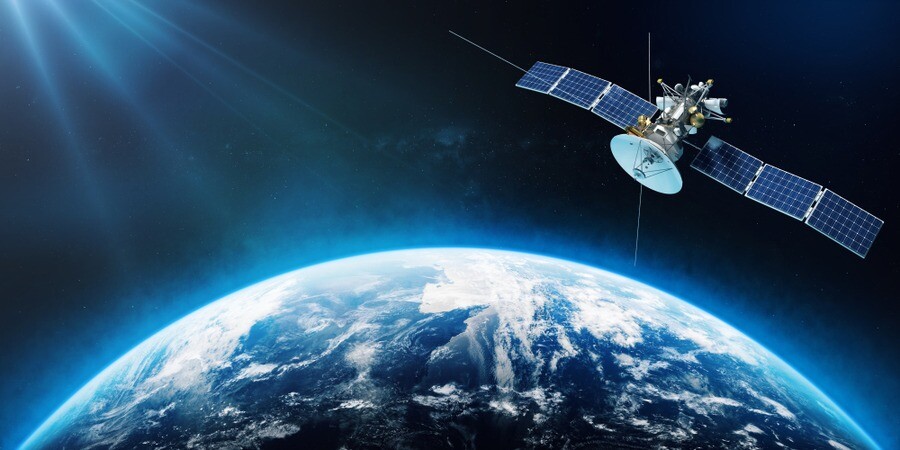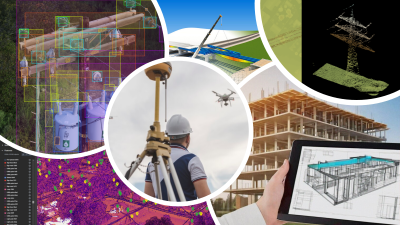The value of lidar and data resulting from its scans is well known for a number of different industries, from autonomous vehicles to surveying to construction and plenty more. Its ability to accurately record elevation data for a given area is particularly important for industries like agriculture, urban planning, environmental science, mining, and so much more. The issue is that it can be extremely expensive and/or challenging to collect this data, and we only have reliable and consistent elevation data for small swaths of the Earth’s land surface. Finding a way to collect the data at scale has been significantly easier said than done.
Earlier this year, though, a company emerged with a goal of changing that. In May of this year, NUVIEW emerged from stealth and unveiled their plan to build the first-even commercial lidar satellite constellation with the stated goal of mapping the entire land surface of the Earth in 3D on an annual basis. The company has yet to launch any satellites, never mind collect data, but the technology they’ve shown early adopters – which has not been shared publicly to date – has been enough to get the company $1.2 billion in letters of intent and data purchase option agreements, and while also landing them on TIME’s list of 2023’s best inventions.
Earlier this month, Clint Graumann, a co-founder and CEO of NUVIEW, spoke with Geo Week News about the company’s formation, why they’re the first to be able to make these plans, and their goals for the future.
The culmination of years in the industry
Although NUVIEW is a brand new company who just came out of stealth this year, it’s a plan that has been in the works for a couple of years, and more importantly is the brainchild resulting from years in the industry. Graumann, for example, has been working in the geospatial and/or Earth observation realm since 2009, when he worked for a company called RapidEye, a satellite company which was eventually acquired by Planet Labs and what Graumann told Geo Week News could “arguably be considered the first new space company.”
From there, he helped start a consulting company to help “small tech companies get off the ground in synthetic aperture radar, hyperspectral, thermal, traditional multispectral,” working heavily in the Earth observation space. It’s through that process, Graumann says, that he really started to get a feel for what customers were working on.
“Through that whole process, I got to know customers from all different vertical markets and industries. During the pandemic, one of the things I realized, after none of us were able to travel and all of our lives slowed down, that customers had been telling us for 15 years, no matter what they were working on, they always wanted lidar data to go with it as a foundational piece of geospatial data.”
He says that he realized the difficulty in collecting that data at scale made it extremely expensive, and so users have a difficult time collecting and consuming it. This sparked the idea for NUVIEW, and Graumann has continued to build a team of people with plenty of experience in the industry. Along with himself, the company brought on Dr. Paul McManamon as their Chief Science Officer after he’d served as the chief of the Air Force Research Lab. Others in leadership positions have experience at companies like Planet, TerraMetric, and the National Geospatial-Intelligence Agency.
All together, Graumann says, “I think we’re well on the way to doing something truly unique in the geospatial world.”
Combining experience with timing
While NUVIEW is the first company to try and bring satellite-based lidar to commercial spaces, the technology has existed with organizations like NASA utilizing it for non-commercial purposes. So it’s only natural to wonder why this hasn’t been developed before, and while the vast experience in the industry noted above plays a significant role, the confluence of technological innovations made this the right now to strike.
Graumann describes a couple of different factors which have allowed them to create their prototypes and put themselves on the path towards delivering this data within the next few years, starting with the necessary power. The technology to provide small satellites with enough power to run these lidar systems only came about “fairly recently,” he says. Similarly, the type of sensor necessary to collect the data was only declassified recently. That, combined with the shrinking costs of satellite launches and the increasing frequency and reliability have made things possible. “I don’t believe we’re the first to ever think of this,” Graumann said. “I think we’re the first to really put all the pieces together when all the pieces were available.”
To be clear, it’s not just this technology becoming more accessible and commercially available with NUVIEW winning the race to put them together. There is plenty of their own creation in making this work, all of which is still proprietary and largely secret outside of early investors. But Graumann says that McManamon developed proprietary IP to enable the scanning of large areas, which in turn unlocks the ability to deliver their lofty promises. Similarly, they’ve combined known compression techniques with proprietary algorithms onboard the satellites on the data processing size to make these massive amounts of data accessible by the end users.
“There are proprietary ways – which we won’t disclose the secret sauce – that we’re doing, some onboard processing on the spacecraft to be able to eliminate a vast majority of that size before it ever hits the ground. You combine that with some relatively known compression techniques and we’ll be able to downlink the data much easier.” Graumann notes that this issue of data size was obstacle number one, but “the problem turned out to be a lot more solvable than we anticipated.”
Planning into the future
As far as specifics, Graumann doesn’t have much to offer in terms of NUVIEW’s plans. There has been speculation of plans to start launching their 20-satellite constellation in 2025, though he declined to confirm those plans, noting that the space industry has a lot of moving pieces and that he doesn’t want to promise anything only to have to constantly adjust. That said, he did tell Geo Week News about their Space Proof of Concept – which they’ve named Mr. SPOC – that will be launched and whose data will be made available to their first partners.
Outside of those specifics, though, Graumann and the NUVIEW team has lofty plans for their constellation. “We’re building 20 satellites, and those satellites will be able to scan continent-level areas. That doesn’t mean we’re going to do it in a day, but we’ll be taking programs that have taken years, and bring them into months to be able to get them done. Our goal is to repeat that scale on an annual basis. We’re building enough capacity that our target is to scan the entire land surface of the Earth once per year. We’re shooting for quality level two standards based on the 3DEP program in the US.”
While it’s still not clear exactly who has been investing early, Graumann points to a number of different industries that have been in contact about getting early access to some of the data acquired by NUVIEW. This includes spaces like agriculture and forestry, as well as civil infrastructure, environmental science, energy, mining, and more. For everyone, they envision providing the lidar data, which Graumann describes as being “foundational” across industry, along with the ability to bring in high-fidelity, high-density data for specific areas of interest.
“We’re really a combination of what we’re building toward, of foundational mapping as well as a task system that can give you really high-fidelity data.”






